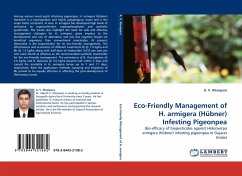Insecticide resistance is a common phenomenon among insects all over the world. Insects have different mechanisms to avoid toxic effects of insecticides. Metabolic resistance is of one of the common mechanisms among insects. This manuscript highlight the role of insecticide detoxifying enzymes (ie., Esterases, Glutathion S-transferases and Monooxygenases) in developing resistance in insects. Fruit fly, Bactocera dorsalis, was used a a model organism. It was concluded from the study that resistance development is a complex process, no single mechanism can explain this phenomenon alone. So there is need for further studies to take other mechanisms into account, in order to describe the mechanism of insecticide resistance in Bactrocera dorsalis, comprehensively.
Bitte wählen Sie Ihr Anliegen aus.
Rechnungen
Retourenschein anfordern
Bestellstatus
Storno








